Find Help
More Items From Ergsy search
-
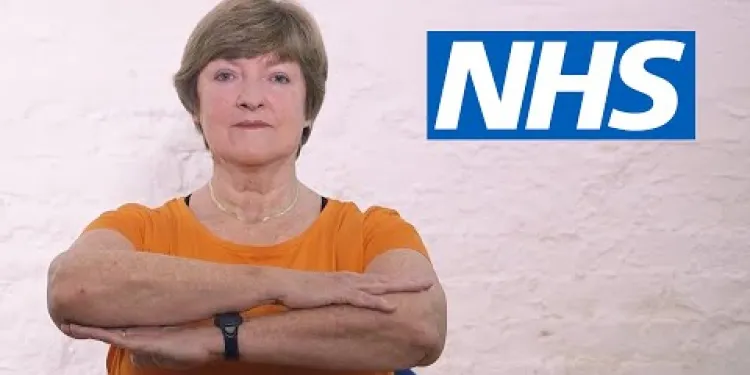
Pilates for back pain: Seated waist twist | NHS
Relevance: 100%
-
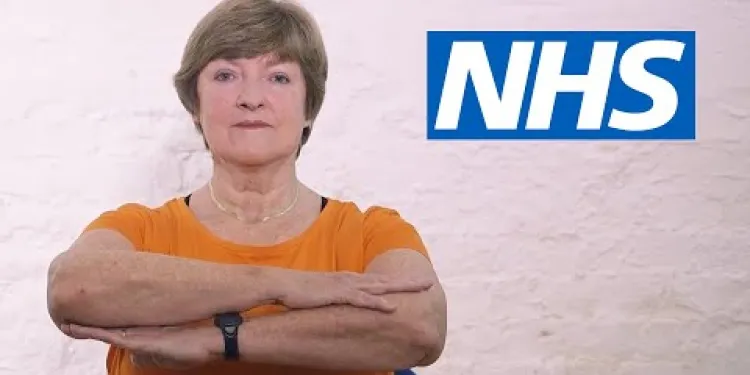
Pilates for back pain: Seated waist twist | NHS
Relevance: 99%
-
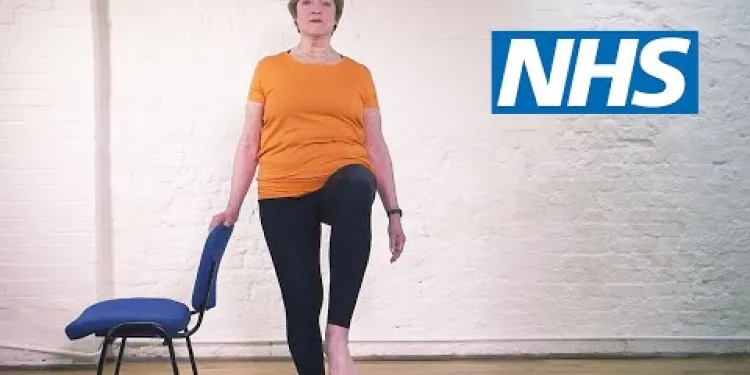
Pilates for back pain: Standing on one leg | NHS
Relevance: 42%
-

Can I do Pilates while pregnant?
Relevance: 29%
-

How to treat back pain | NHS
Relevance: 27%
-

Mechanical Lower Back Pain
Relevance: 25%
-
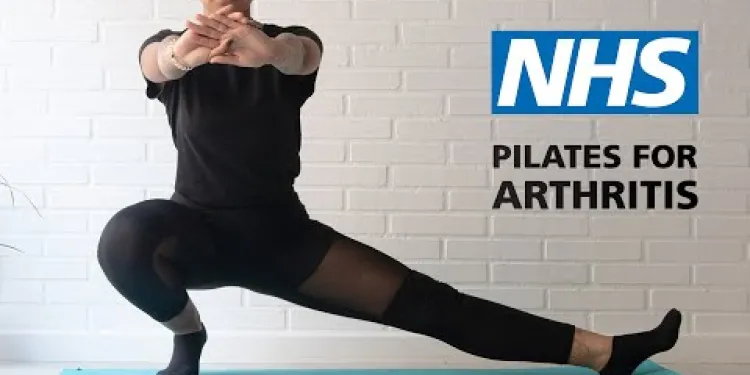
Pilates for Arthritis | NHS
Relevance: 25%
-

How do chiropractors treat back pain?
Relevance: 24%
-

MSK Lower Back Pain information video
Relevance: 23%
-

Useful information for patients with lower back pain
Relevance: 23%
-

Useful information for patients with lower back pain
Relevance: 23%
-

Back stretches | NHS
Relevance: 21%
-

Evidence-Based Interventions: injections for non-specific low back pain without sciatica
Relevance: 20%
-

Should I avoid lying on my back during exercise?
Relevance: 16%
-

What exercises can I do during pregnancy?
Relevance: 15%
-
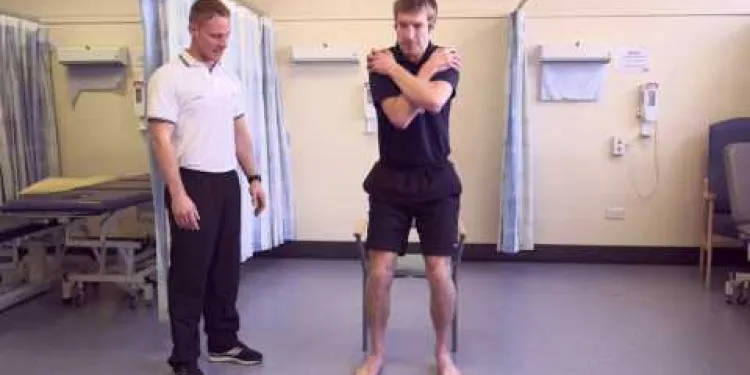
Exercises to help your lateral hip pain
Relevance: 15%
-
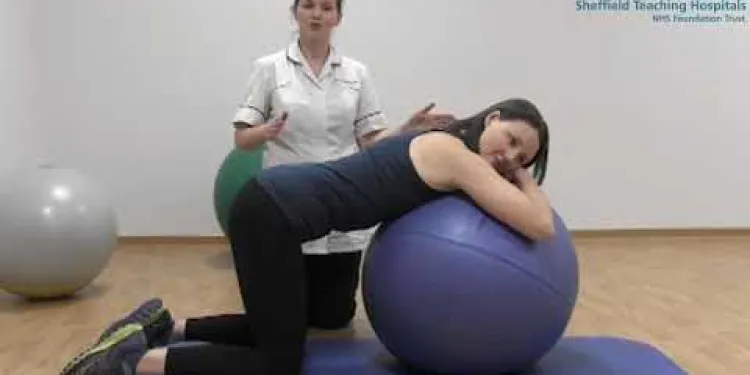
Mat and gym ball exercises with pregnancy related Pelvic Girdle Pain
Relevance: 14%
-
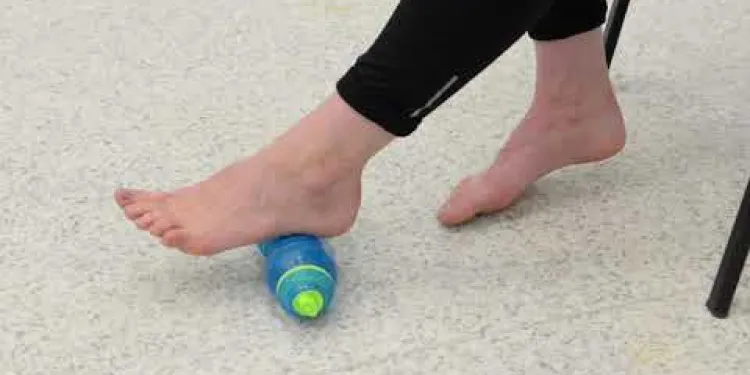
Foot Pain
Relevance: 14%
-

Can I do abdominal exercises during pregnancy?
Relevance: 14%
-

Is a mammogram painful?
Relevance: 13%
-
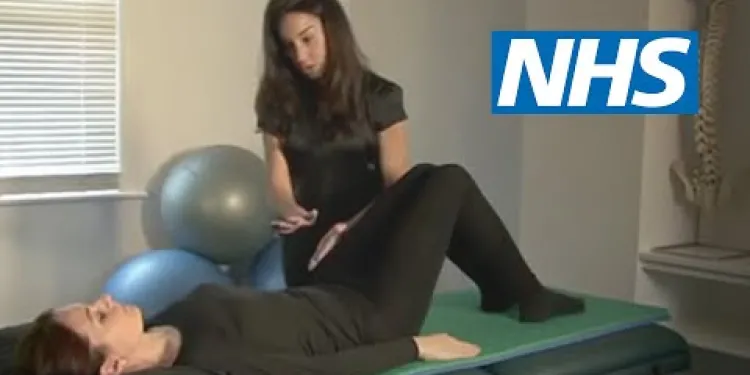
Exercises for sciatica: degenerative disc disease | NHS
Relevance: 13%
-

Period pain (dysmenorrhoea) - BSL
Relevance: 13%
-

Are chiropractic treatments painful?
Relevance: 13%
-

Are there any fees to claim money back?
Relevance: 13%
-

How to deal with period pain | NHS
Relevance: 13%
-

How to deal with period pain | NHS
Relevance: 12%
-

Is impetigo painful?
Relevance: 12%
-

Heel pain | NHS
Relevance: 12%
-

Is a facelift painful?
Relevance: 12%
-
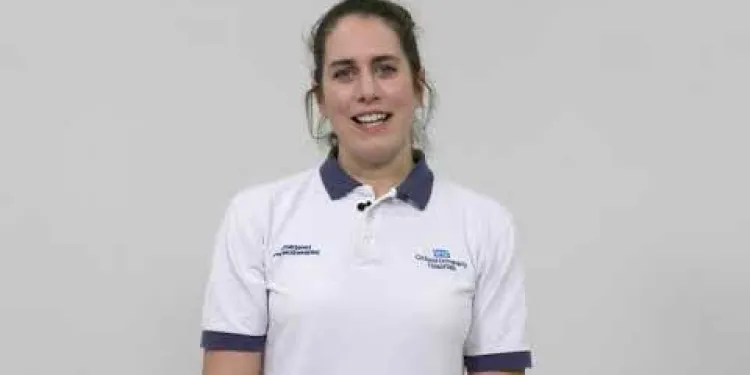
Pelvic Girdle Pain Advice Class
Relevance: 12%
-

Can lifestyle changes help manage pain and fever during pregnancy?
Relevance: 12%
-

How to deal with period pain | NHS
Relevance: 12%
-

How to deal with period pain | NHS
Relevance: 12%
-

Where is the pain located when you have appendicitis?
Relevance: 12%
-

Shoulder pain | NHS
Relevance: 12%
-

Shoulder pain | NHS
Relevance: 12%
-

Will I feel pain during the procedure?
Relevance: 11%
-
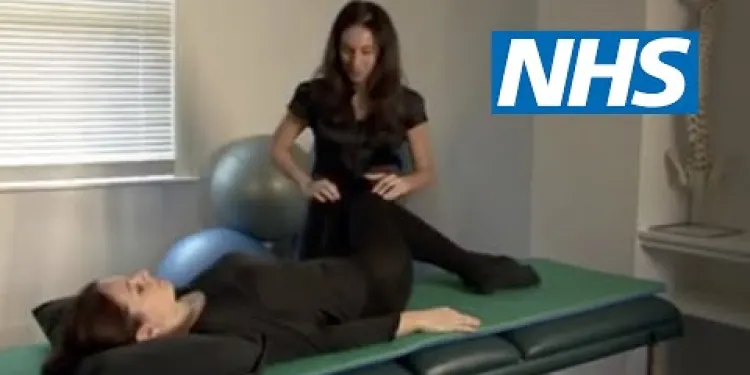
Exercises for sciatica: piriformis syndrome | NHS
Relevance: 11%
-

Advice on neck pain and whiplash
Relevance: 11%
-

Stomach ache and abdominal pain
Relevance: 11%
Pilates for Back Pain: Seated Waist Twist | NHS
Pilates has long been recognized for its benefits in strengthening core muscles, improving flexibility, and alleviating back pain. This gentle yet effective exercise regimen is particularly beneficial for individuals experiencing back discomfort. One of the exercises often recommended for back pain relief by the NHS is the Seated Waist Twist. This exercise is designed to enhance spinal mobility, elongate the torso, and promote a healthy postural alignment.
Understanding Back Pain
Back pain is a common issue affecting many individuals in the United Kingdom. It can be caused by a variety of factors including poor posture, sedentary lifestyle, stress, and overexertion. Chronic back pain can significantly impact one’s quality of life, making it essential to incorporate exercises that can alleviate discomfort and strengthen the back muscles. Pilates, a low-impact exercise programme, is particularly effective in addressing the root causes of back pain, offering relief and promoting overall spinal health.
Benefits of Pilates for Back Pain
Pilates is designed to target deep stabilizing muscles that support the spine. Regular practice can lead to improved posture, increased flexibility, and greater core strength, all of which are crucial for maintaining a healthy back. The Seated Waist Twist, specifically, helps to increase the range of motion in the spine and relieve tightness in the lower back. This can be particularly beneficial for individuals who spend long hours seated, such as office workers.
How to Perform the Seated Waist Twist
To perform the Seated Waist Twist, follow these steps:
- Starting Position: Sit up straight on a chair with both feet flat on the floor. Engage your core muscles and ensure that your spine is erect.
- Arm Position: Extend your arms out in front of you at shoulder height with palms facing each other.
- Twist Motion: Inhale deeply, and as you exhale, gently twist your upper body to the right. Keep your hips facing forward and only move your torso. Hold this position for a few seconds while breathing normally.
- Return to Center: Inhale again and slowly return to the starting position. Repeat the twist to the left side.
- Repetitions: Perform 5-10 repetitions on each side, ensuring that the movements are slow and controlled.
Precautions and Tips
As with any exercise, it is important to listen to your body and avoid any movements that cause pain or discomfort. Here are a few tips to keep in mind:
- Maintain proper posture throughout the exercise to avoid unnecessary strain on your spine.
- Perform the twists slowly and with control to maximize the benefits and prevent injury.
- If you experience intense pain, stop the exercise immediately and consult an NHS healthcare professional for guidance.
Conclusion
Incorporating the Seated Waist Twist into your daily routine can significantly help in managing and alleviating back pain. Pilates exercises, endorsed by the NHS, offer a safe and effective approach to improving spinal health and enhancing overall well-being. Regular practice, coupled with mindful movement, can lead to lasting relief from back discomfort.
Pilates for Back Pain: Seated Waist Twist | NHS
Pilates is a type of exercise. It helps make your tummy and back strong. It also helps your body bend better and can help your back feel better. The NHS says the Seated Waist Twist is good for back pain. This exercise helps your back move better, makes you stand up straight, and helps your body feel good.
Understanding Back Pain
Many people in the UK have back pain. There are many reasons for back pain. Some reasons are sitting too much, not sitting properly, stress, or doing too much. Back pain can make life hard. Doing exercises can help make your back feel better and stronger. Pilates is a gentle exercise that can help. It makes your back stronger and can help your back feel better.
Benefits of Pilates for Back Pain
Pilates exercises help support your back. When you do Pilates often, you can stand up better, bend your body more, and make your tummy strong. This helps your back. The Seated Waist Twist helps your back and makes your lower back less tight. This is good for people who sit a lot, like people who work in offices.
How to Perform the Seated Waist Twist
Here is how you do the Seated Waist Twist:
- Starting Position: Sit up straight on a chair. Put your feet flat on the floor. Hold in your tummy and keep your back straight.
- Arm Position: Hold your arms out in front. Keep them level with your shoulders. Your hands should face each other.
- Twist Motion: Take a deep breath, and as you let the air out, slowly turn your upper body to the right. Keep your hips still. Only move your upper body. Stay for a few seconds. Breathe normally.
- Return to Center: Breathe in and slowly turn back to the center. Now, turn to the left side.
- Repetitions: Do this twist 5-10 times on each side. Move slowly and carefully.
Precautions and Tips
Make sure to be careful when you exercise. Here are some tips:
- Sit up straight so you do not hurt your back.
- Move slowly and carefully. This helps you and stops you from getting hurt.
- If you feel very bad pain, stop. Talk to a doctor from the NHS to get help.
Conclusion
Doing the Seated Waist Twist every day can help your back feel a lot better. Pilates exercises are safe and can help your back. The NHS agrees. Practice often and remember to move carefully. This can help your back feel good and keep you healthy.
Frequently Asked Questions
What is the seated waist twist exercise?
The seated waist twist is a Pilates exercise designed to help improve flexibility and reduce back pain.
How can the seated waist twist help with back pain?
The seated waist twist can help alleviate back pain by stretching and strengthening muscles in the back and core, which improves posture and spinal alignment.
What do I need to perform the seated waist twist?
You need a sturdy chair or a surface you can sit on, with enough space around you to twist comfortably.
How should I sit to perform the seated waist twist correctly?
Sit up straight on a chair with your feet flat on the ground, hip-width apart. Place your hands on your thighs or loosely by your sides.
What is the proper breathing technique for the seated waist twist?
Inhale deeply to prepare, and as you exhale, twist your torso to one side. Return to the centre as you inhale, and repeat on the other side as you exhale.
How far should I twist during the exercise?
Only twist as far as is comfortable without straining. The goal is to gently stretch your muscles, not to push into pain.
How many repetitions should I do for the seated waist twist?
Aim to perform 5-10 repetitions on each side, depending on your comfort level.
How often should I perform the seated waist twist to see benefits?
Incorporate the seated waist twist into your routine 2-3 times a week or as recommended by your healthcare provider.
Are there any modifications for beginners?
Beginners can start with smaller, gentler twists and gradually increase the range of motion as they become more comfortable.
Can the seated waist twist be done by individuals with severe back pain?
Those with severe back pain should consult with their healthcare provider before attempting any new exercise, including the seated waist twist.
What if I feel pain while doing the seated waist twist?
If you feel pain while doing the seated waist twist, stop immediately and consult a healthcare professional for further advice.
Can pregnant women perform the seated waist twist?
Pregnant women should consult their healthcare provider before performing the seated waist twist, as certain movements may not be advisable.
Is the seated waist twist suitable for elderly people?
Yes, the seated waist twist can be suitable for elderly people, but they should perform the exercise gently and consult with their healthcare provider if they have any concerns.
Can the seated waist twist be part of a larger Pilates routine?
Yes, the seated waist twist can be integrated into a broader Pilates routine to provide balanced and comprehensive core strengthening and flexibility.
Is there any specific time of day that is best to perform the seated waist twist?
You can perform the seated waist twist at any time of day, but it's important to do it when your body is warm, such as after a gentle warm-up or other physical activity.
What is the seated waist twist exercise?
The seated waist twist is a simple exercise. You sit and turn your upper body to the sides. This helps make your tummy and sides strong. You can do it at home or work. It's good for everyone.
How to do the seated waist twist:
- Sit on a chair with your back straight.
- Put your hands behind your head.
- Turn your upper body to the left while keeping your lower body still.
- Turn back to the middle.
- Then, turn your upper body to the right.
- Keep doing this back and forth a few times.
Tools you can use:
- Watch a video showing how to do it.
- Use a timer to count how long you twist.
- Ask a friend to practice with you.
Remember to breathe and take it easy. Have fun twisting!
The seated waist twist is an exercise. It's part of Pilates. Pilates helps make your body more flexible. This exercise can also help if your back hurts.
How can sitting down and twisting help with back pain?
Sitting down and twisting your body can make your back feel better. This exercise helps your muscles stretch and can make you feel less pain. You can try it at home. Remember to do it slowly and gently.
Tools and tips that can help:
- Ask someone to show you how to do it.
- Watch a video for help.
- Use a chair that feels comfortable.
The seated waist twist is a helpful move. It can make your back feel better. When you do this, you stretch and make your back and tummy muscles stronger. This helps you sit up straight and keeps your back in a healthy position.
If this is hard, you can try using tools like a cushion or chair for support. Go slowly and ask for help if you need it.
What do I need to do the seated waist twist?
You need a strong chair to sit on, or something else that's really strong for sitting. Make sure there's lots of room around you so you can turn your body easily.
How do I sit right for the waist twist exercise?
Sit tall on a chair with your feet flat on the floor.
Keep your back straight and shoulders down.
Use a mirror to check your posture.
Ask someone to help if you need it.
Sit up straight on a chair. Keep your feet flat on the floor. Your feet should be a little bit apart, like the size of your hips. Put your hands on your legs or let them hang by your sides.
How should I breathe when doing a seated waist twist?
When you sit and twist your waist, breathe in through your nose. Then, breathe out slowly through your mouth. This helps you feel calm and stretch better.
Ask someone to show you or use a picture guide to help you understand the breathing. A timer might help you keep track of your breathing, too.
Take a big breath in, then breathe out and turn your body to one side. Breathe in and come back to the middle. Breathe out and turn to the other side.
How much should I turn during the exercise?
Turn your body just until it feels nice. Don't twist too far or it will hurt. The idea is to stretch your muscles gently and not feel pain.
How many times should I do the seated waist twist?
Try to do this exercise 5 to 10 times on each side. Do what feels good for you.
How many times should I do the seated waist twist to feel better?
Try doing the seated waist twist a few times every week. This will help you feel better. You can also ask a grown-up to help you or watch a video for guidance.
Try doing the seated waist twist 2 to 3 times each week, or ask your doctor how many times is good for you.
Are there any changes for beginners?
If you are just starting, there are easy ways to get better.
- You can start slow.
- You can try simple steps.
- Ask someone for help if you need it.
Using pictures or videos can make things easier to understand.
If you are new, start with small and gentle twists. As you get used to it, you can slowly move more.
Is it safe to do a seated waist twist if you have bad back pain?
If your back hurts a lot, talk to your doctor before trying new exercises like the seated waist twist.
What should I do if it hurts when I do the seated waist twist?
If you feel pain during the seated waist twist exercise, stop doing it right away.
Here are some tips to help you:
- Take a break and rest for a bit.
- Try doing the twist more slowly next time.
- Only twist as far as it feels comfortable. Don't push too hard.
- If it keeps hurting, talk to a grown-up or a doctor.
- A warm towel or heat pack can help relax your muscles.
- Ask someone to help you or show you the correct way to do it.
If you feel any pain while doing the seated waist twist exercise, stop right away. Talk to a doctor or nurse for more help.
Can pregnant women do the seated waist twist?
If you are pregnant, you might wonder if it's safe to do the seated waist twist exercise. It's a good idea to talk to your doctor before doing new exercises.
This exercise can be hard if you're pregnant, so it's important to be careful. Ask someone to show you how to do it the right way.
Use pillows or a chair for extra support if you need it.
Listen to your body. If something hurts or feels wrong, stop doing it right away.
If you are pregnant, talk to your doctor before doing the seated waist twist. Some movements might not be safe for you to do.
Can older people do the seated waist twist?
Yes, older people can do the seated waist twist. But they should do it slowly and carefully. If they are worried, they should talk to their doctor first.
Can the Seated Waist Twist be in a Pilates Exercise Plan?
Yes, you can add the seated waist twist to your Pilates workout. It helps make your tummy muscles strong and keeps your body flexible.
What is the best time of day to do the seated waist twist?
You can do the seated waist twist any time during the day. It's good to do it when your body is warm. You can warm up by doing some light exercise first.
Useful Links
- Ergsy carfully checks the information in the videos we provide here.
- Videos shown by Youtube after a video has completed, have NOT been reviewed by ERGSY.
- To view, click the arrow in centre of video.
- Most of the videos you find here will have subtitles and/or closed captions available.
- You may need to turn these on, and choose your preferred language.
- Go to the video you'd like to watch.
- If closed captions (CC) are available, settings will be visible on the bottom right of the video player.
- To turn on Captions, click settings .
- To turn off Captions, click settings again.
More Items From Ergsy search
-

Pilates for back pain: Seated waist twist | NHS
Relevance: 100%
-

Pilates for back pain: Seated waist twist | NHS
Relevance: 99%
-

Pilates for back pain: Standing on one leg | NHS
Relevance: 42%
-

Can I do Pilates while pregnant?
Relevance: 29%
-

How to treat back pain | NHS
Relevance: 27%
-

Mechanical Lower Back Pain
Relevance: 25%
-

Pilates for Arthritis | NHS
Relevance: 25%
-

How do chiropractors treat back pain?
Relevance: 24%
-

MSK Lower Back Pain information video
Relevance: 23%
-

Useful information for patients with lower back pain
Relevance: 23%
-

Useful information for patients with lower back pain
Relevance: 23%
-

Back stretches | NHS
Relevance: 21%
-

Evidence-Based Interventions: injections for non-specific low back pain without sciatica
Relevance: 20%
-

Should I avoid lying on my back during exercise?
Relevance: 16%
-

What exercises can I do during pregnancy?
Relevance: 15%
-

Exercises to help your lateral hip pain
Relevance: 15%
-

Mat and gym ball exercises with pregnancy related Pelvic Girdle Pain
Relevance: 14%
-

Foot Pain
Relevance: 14%
-

Can I do abdominal exercises during pregnancy?
Relevance: 14%
-

Is a mammogram painful?
Relevance: 13%
-

Exercises for sciatica: degenerative disc disease | NHS
Relevance: 13%
-

Period pain (dysmenorrhoea) - BSL
Relevance: 13%
-

Are chiropractic treatments painful?
Relevance: 13%
-

Are there any fees to claim money back?
Relevance: 13%
-

How to deal with period pain | NHS
Relevance: 13%
-

How to deal with period pain | NHS
Relevance: 12%
-

Is impetigo painful?
Relevance: 12%
-

Heel pain | NHS
Relevance: 12%
-

Is a facelift painful?
Relevance: 12%
-

Pelvic Girdle Pain Advice Class
Relevance: 12%
-

Can lifestyle changes help manage pain and fever during pregnancy?
Relevance: 12%
-

How to deal with period pain | NHS
Relevance: 12%
-

How to deal with period pain | NHS
Relevance: 12%
-

Where is the pain located when you have appendicitis?
Relevance: 12%
-

Shoulder pain | NHS
Relevance: 12%
-

Shoulder pain | NHS
Relevance: 12%
-

Will I feel pain during the procedure?
Relevance: 11%
-

Exercises for sciatica: piriformis syndrome | NHS
Relevance: 11%
-

Advice on neck pain and whiplash
Relevance: 11%
-

Stomach ache and abdominal pain
Relevance: 11%


